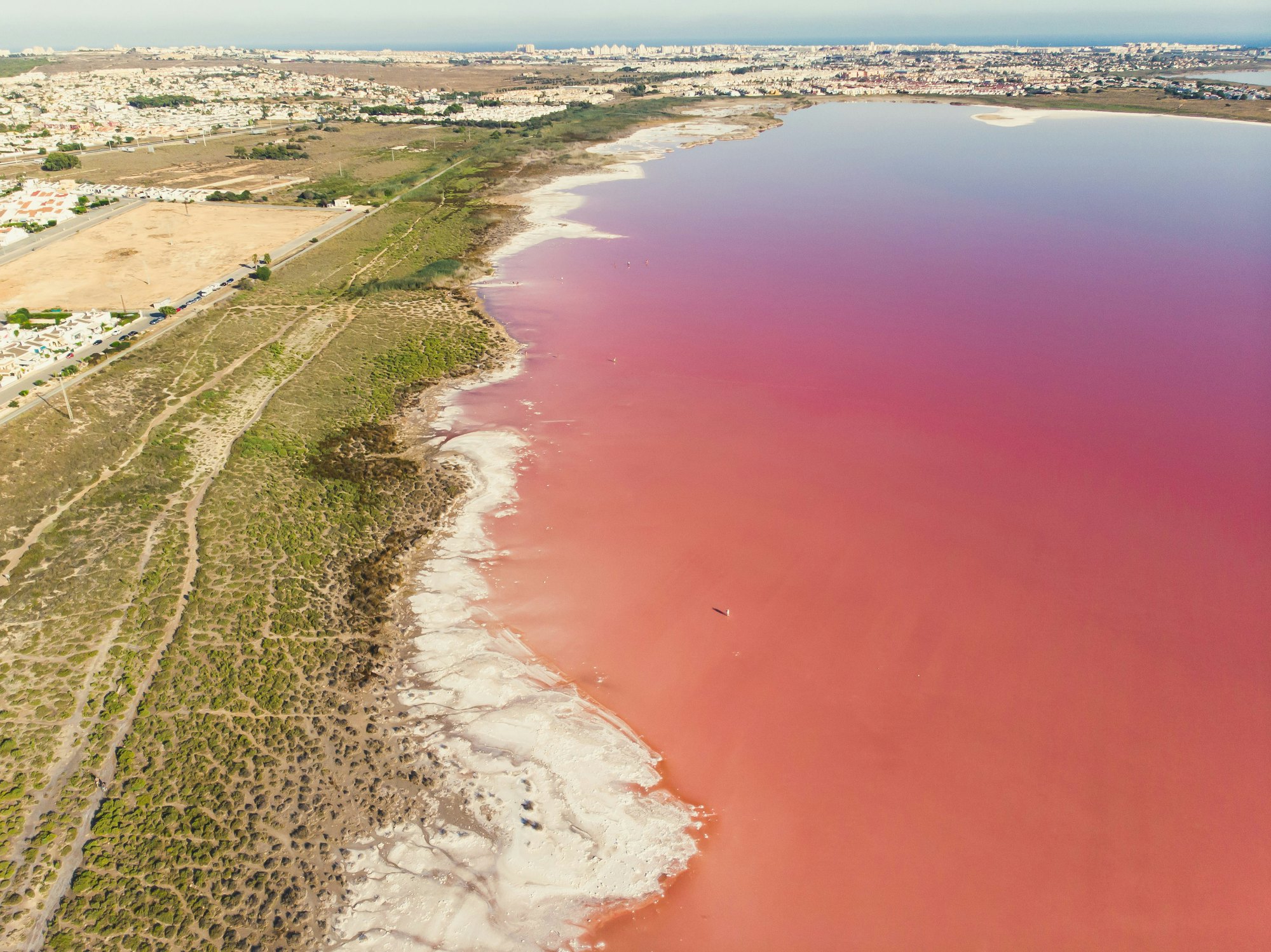

Dramatic sandstone arches, alabaster-white ancient springs, all-encompassing fields of periwinkle – all the stuff of travel daydreams, right? Natural features around the world are often a sight for sore eyes when you've been focused on the day-to-day, especially natural wonders that seem to test the imagination and seem more suited to storybooks than scientific journals and geographic atlases. Some are popular destinations for travelers (when we're not social distancing, that is), others are far-flung, remote, and overlooked. But all of them are stunners.
If you're longing for a taste of earth’s most artistic, stunning natural offerings, that showcase the world at its most tantalizing and stupefying, these 10 natural wonders are total eye candy:

1. Blue Basin – Oregon, USA
The landscapes of Oregon’s John Day Fossil Beds don’t just reflect their prehistoric namesakes – the rocky cliffs and canyons of the Blue Basin area emanate a chalk-like blue-green that collides with the surrounding desert beige, and lends credit to the region’s Painted Hills moniker. Hike a winding boardwalk for 360-degree views of seemingly paint-splattered rock formations.
2. Hang Son Doong – Vietnam
Only first officially surveyed in the last decade, Hang Son Doong has emerged as the world’s largest cave both by volume and by cross section, making for a breathtaking view from the cavern’s mouth. The cave is home to 230ft stalagmites and entire forests of trees, grown beneath massive openings in the cave’s ceiling. Nearby in the same Phong Nha-Kẻ Bàng National Park is Hang En, the world's third-largest cave.

3. Las Salinas de Torrevieja (Pink Lake) – Spain
Take a dip in Spain’s Las Salinas de Torrevieja and you’ll find yourself surrounded by nature’s organic blush. This regularly rose-colored lake owes its pink hue to microorganisms feeding off the abundant saltwater, and is complemented artistically by local flocks of flamingos, who gather around the shores in the thousands during breeding season.

4. Dockey Wood Bluebells – UK
Once a year, a verdant blue hue blankets these English woods outside London, drawing visitors by the thousands. Managed by the UK’s National Trust, the Dockey Wood Nature Preserve blooms a carpet of bluebells every spring, one of the best showings in the country. Hike for miles through the bluebells and lose yourself in spring chromas.

5. Socotra Island – Yemen
Technically under the auspices of Yemen, geographically part of Africa, and floating in the Arabian Sea, this archipelago is full of some of the most unique looking flora and fauna on earth. There are over 700 endemic species, including the striking dragon trees that make Socotra look a little like something from Dr. Seuss' work. Socotra is a fragment of the ancient supercontinent Gondwanna – which once included Antarctica, South America and Africa.
You may also like: From Loch Ness to a real-life Atlantis, these places are straight out of mythology

6. Horsetail Fall, Yosemite National Park – USA
Yosemite National Park’s Horsetail Fall isn’t just a wondrous sight by day for the millions of annual visitors to the park. On rare occasions during the park’s less-crowded off seasons, the waterfall’s thin stream catches a sunset’s orange glow, and for a few minutes a “firefall” pierces the park’s granite backdrop. While the reflection inevitably fades, this natural wonder unintentionally recreates a piece of the park’s history: the man-made waterfall of smouldering coals that would regularly fall from the edge of Glacier Point in the early 20th century.

7. Wadi Rum – Jordan
Often a movie stand-in for Mars, the sandstone canyons and rock formations of Jordan’s Wadi Rum bear little resemblance to any other geological wonders found on Earth – making this destination a must-see unlike anywhere else. Scattered with wild flora and ancient pictographs dating back two millennia, the setting’s sand dunes and red rock walls seem to encompass time itself.
8. Pamukkale – Turkey
The mineral-rich waters flowing around Pamukkale in southeastern Turkey once fed into the Greco-Roman settlement of Hierapolis – now a series of well-reserved ruins and a Unesco World Heritage Site. The white travertine terraces still stand, however, dreamlike in their appearance to the millions of annual visitors to the site. The name alone fits the spring’s surreal attraction: Pamukkale translates literally to "Cotton Castle" in Turkish.
You may also like: See Pantone's color for 2020 reflected in these destinations

9. Landscape Arch, Utah – USA
By name alone, Arches National Park has a reputation for odd and natural wonders – but among the park’s 2000-some sandstone arches spread across 76,679 acres of red rocks and desert sands, Landscape Arch reigns supreme.
Known as the fifth largest natural arch by span in the world (and largest in the United States), the rock’s sloping peak and red-orange hue forms a stunning sight against the park’s near-constant blue skies.

10. Devil’s Pool – Zimbabwe
Victoria Falls has been an intimidating sight for thousands of years, known as "The Smoke That Thunders" for its impressive cascades stretching more than 5000ft on the border of Zambia and Zimbabwe. If the views from the ground aren’t thrilling enough, daredevil visitors can make their way up to a naturally formed rock pool placed in the last place anyone would think to swim: the falls’ edge.
Known as the Devil’s Pool, this swimming hole’s incredible view of the falls’ power and beauty is preceded by a precarious walk and swim through the Zambezi river. Mind the edge, as the river’s 350ft drop is certainly not to be tested.













